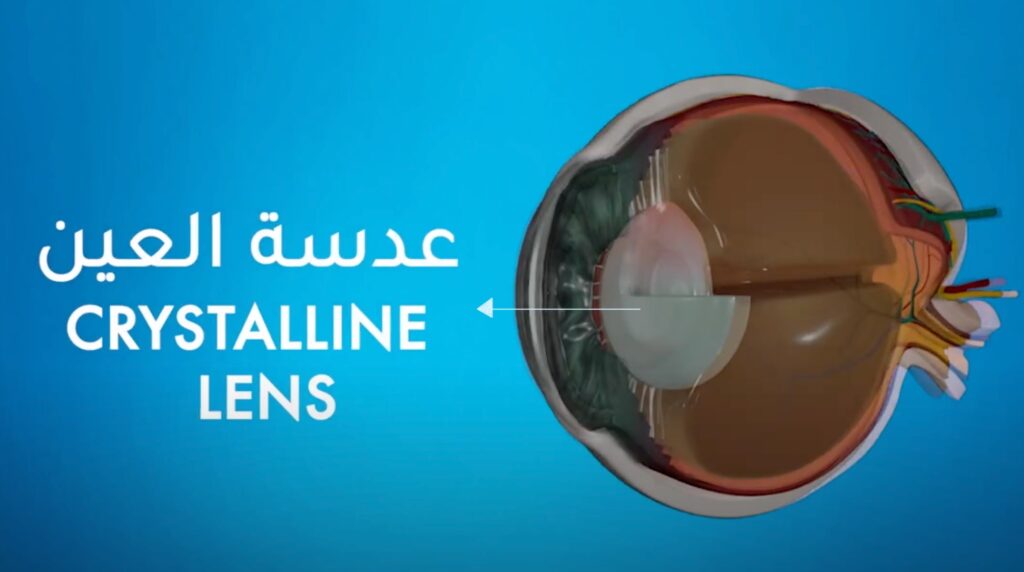Cataracts are cloudy areas that develop on the lens of the eye. The lens, which is a clear and flexible structure primarily composed of proteins called crystallins, becomes affected as you age. Over time, these proteins break down, leading to the formation of cloudy patches that impair vision.

Individuals with cataracts often describe their vision as if they’re looking through a dirty window. As the condition progresses, vision can deteriorate further, making it difficult to perform everyday tasks.
Healthcare professionals regard cataracts as a common and natural part of aging, with age-related cataracts being the most prevalent type.
Fortunately, you don’t have to accept diminishing vision. Ophthalmologists can perform surgery to remove cataracts and restore clarity to your eyesight.
Types of Cataracts
Cataracts can be classified into several types, with this article focusing on age-related cataracts. Other types include:
- Pediatric Cataracts: These affect infants and children. They can be congenital, meaning babies are born with them, or they may develop after birth. Pediatric cataracts often have a hereditary component, but they can also arise from eye injuries or other eye conditions. Prompt treatment is crucial to prevent complications like amblyopia (lazy eye).
- Traumatic Cataracts: These occur as a result of an injury to the eye. Treating traumatic cataracts can be more complex, as it may also involve repairing surrounding structures in addition to addressing the cataract itself.
- Secondary Cataracts: these develop as a result of another ocular disease such as glaucoma, uveitis. Or as a complication of certain medications or systemic diseases
At What Age Do Catracts Usually Start?
Cataracts typically begin to develop when the proteins in the eye’s lens start to break down, which occurs around age 40. However, most people don’t notice symptoms until they reach age 60 or later. Some medical conditions, such as diabetes, may lead to earlier cataract formation.
Risk Factors for Cataracts
Cataract formation is influenced by three main categories of risk factors: environmental, medical, and genetic.
Environmental Risk Factors
Environmental risk factors are elements found in your surroundings that can contribute to cataract development. These include:
- Long-Term UV Light Exposure: Prolonged exposure to sunlight can be harmful.
- Air Pollution
- Tobacco Smoke
- Alcohol Consumption
- History of Radiation Therapy: Especially to the upper body.
These environmental factors increase the production of free radicals in the body, which are unstable molecules that can damage healthy cells, including those in the eye’s lens, potentially leading to cataracts. Reducing exposure to these elements may help slow cataract formation, and researchers are investigating the effectiveness of preventive measures.
Medical Risk Factors
Several medical conditions and treatments can elevate the risk of developing cataracts:
- Diabetes or High Blood Sugar
- Previous Eye Surgeries: Such as those for glaucoma.
- Use of Corticosteroids: Often prescribed for conditions like rheumatoid arthritis.
- Certain Eye Diseases: Including retinitis pigmentosa or uveitis.
Genetic Risk Factors
A family history of cataracts can increase your likelihood of developing them. Some genetic mutations may result in congenital cataracts (present at birth), while others may make the lens more susceptible to damage from environmental factors as you age.
Diagnosis and Tests
How are cataracts diagnosed?
Your ophthalmologist will observe the lens while looking for signs of cataract and assessing its severity, by performing a slit lamp examination. He will also inquire about your vision, medical history, and whether you’re experiencing difficulties with daily activities due to changes in your eyesight, and will also perform a full ophthalmological examination to exclude any other conditions or abnormalities.
Management and Treatment
What Is the Best Way to Treat Cataracts?
The only effective treatment for cataracts is cataract surgery. During this procedure, an ophthalmologist removes the clouded natural lens and replaces it with an intraocular lens (IOL), which is an artificial lens that remains in the eye. Your provider can discuss the various IOL options available.
The primary advantage of an IOL is that it provides clear vision, similar to a healthy natural lens. Additionally, it can correct refractive errors (like near sightedness, far sightedness, and astigmatism), reducing reliance on glasses or contact lenses after surgery.
Is Cataract Surgery Safe?
Cataract surgery is one of the safest and most frequently performed surgeries in the world, with most patients experiencing no serious complications. However, it’s important to be aware of potential risks, such as retinal detachment and infection.
Certain eye diseases or underlying medical conditions can increase the risk of complications. It’s essential to discuss your individual risk factors with your doctor before the surgery, as well as any strategies they may have to address potential issues.
